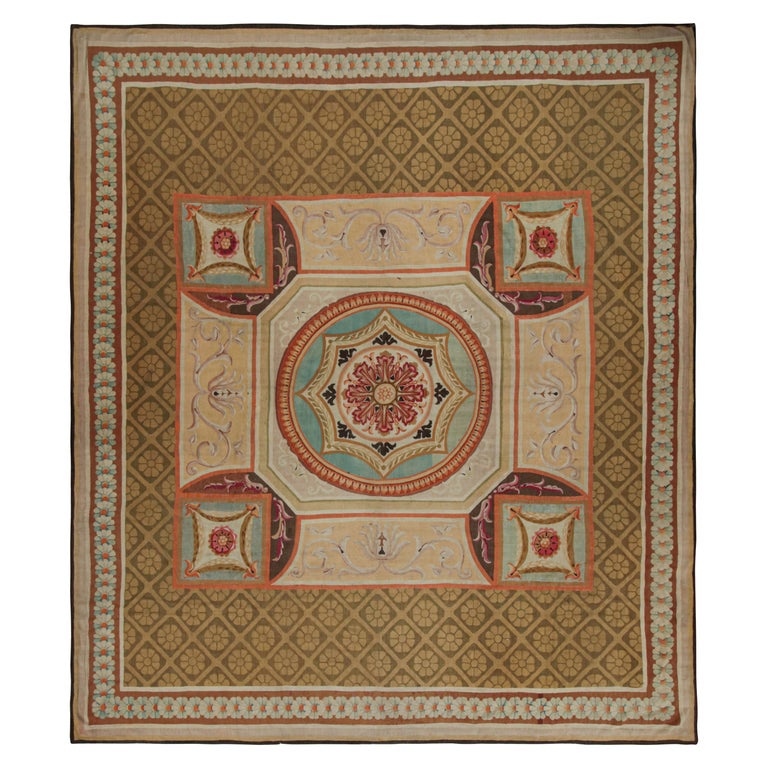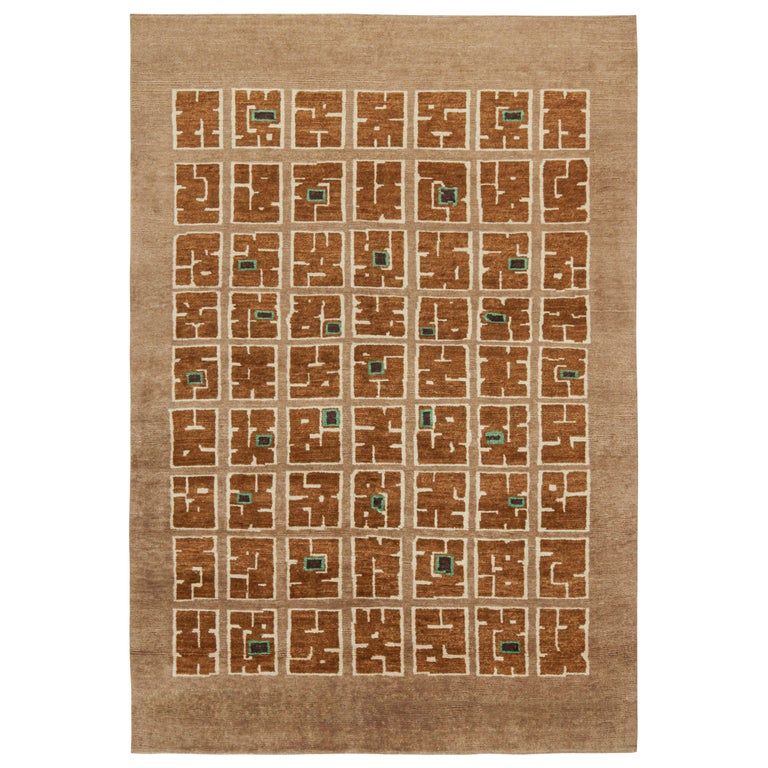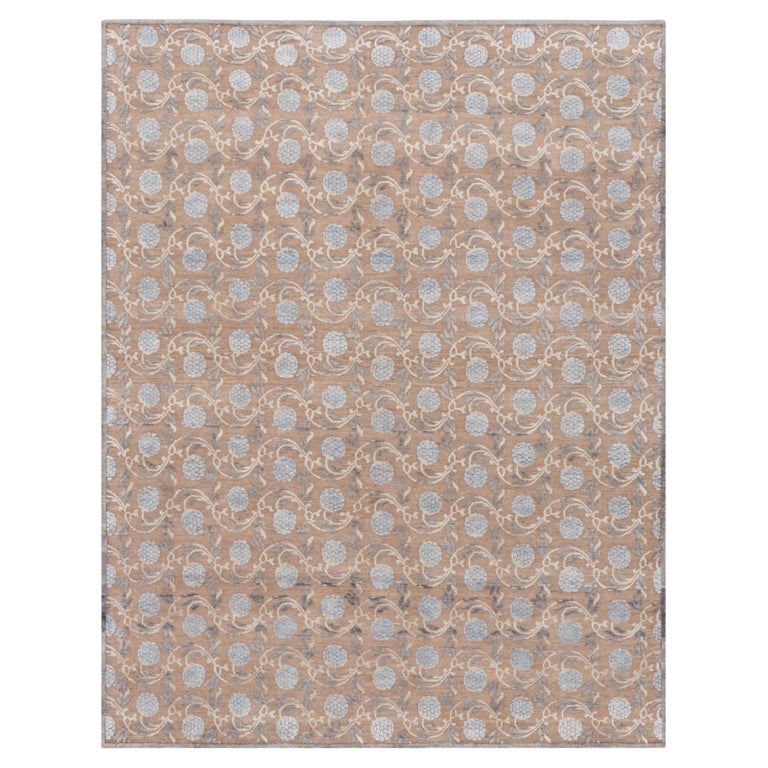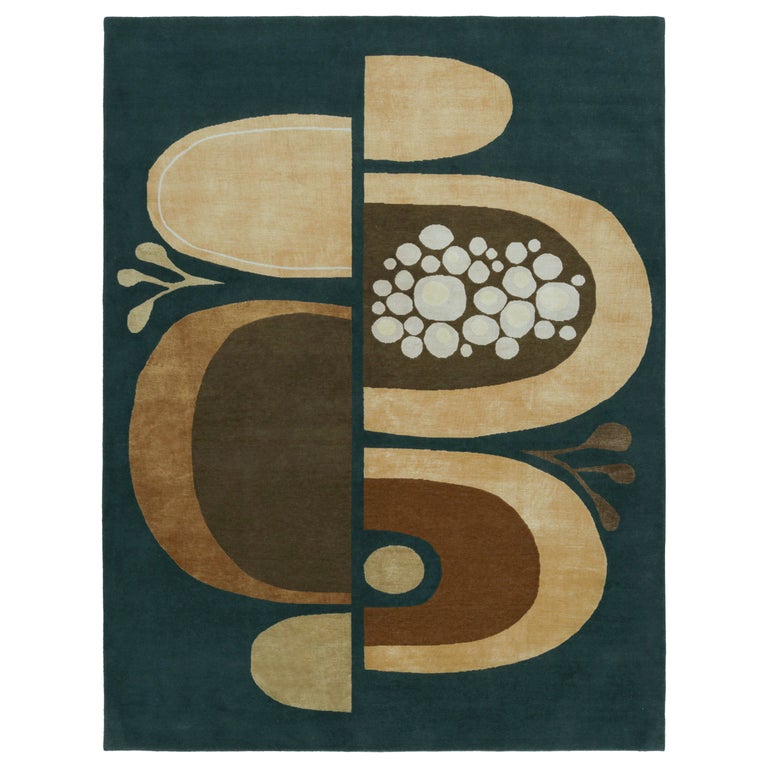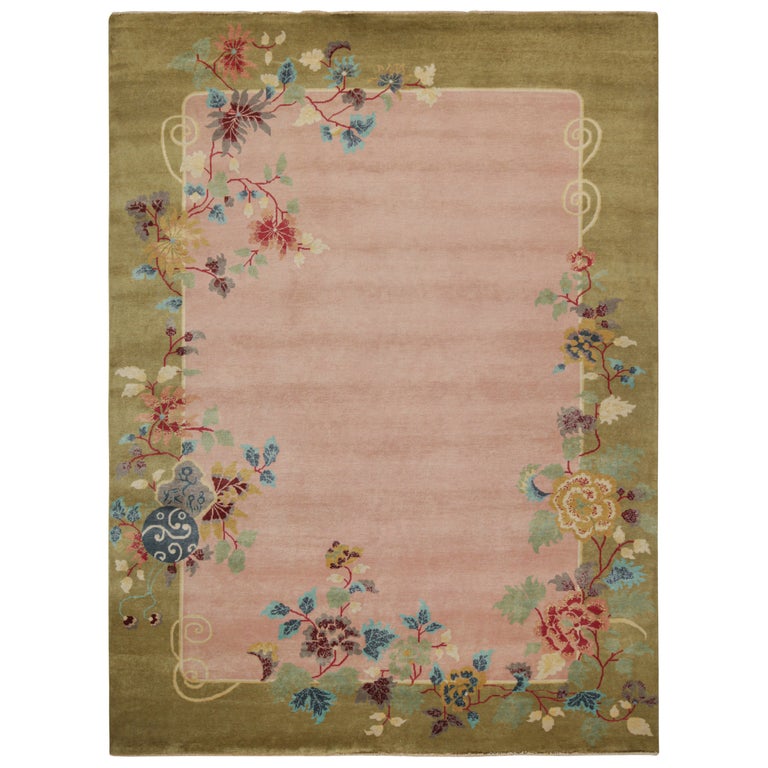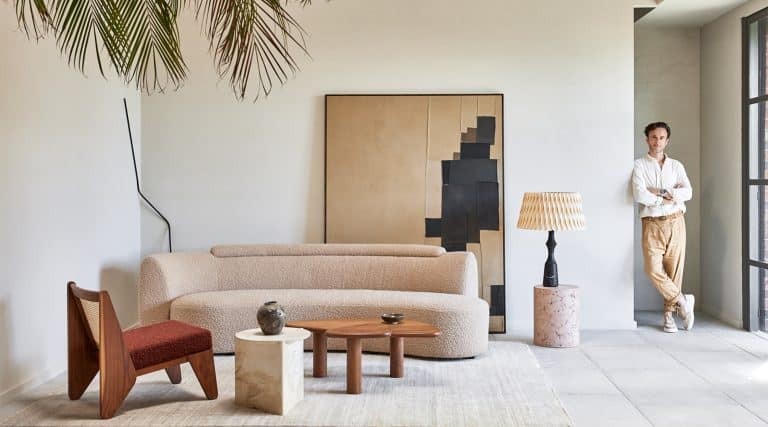September 1, 2024Jahanshah Nazmiyal figures he has seen millions of carpets during his 44 years at the helm of his New York–based company, Rug & Kilim. He can glance at a piece and tell you exactly how old it is, what kind of yarn it’s made from and where it was created — sometimes down to the precise city. But when he started out, Nazmiyal admits, he was flying by the seat of his pants.
After leaving his native Iran, in 1978, and earning a computer-science degree from American University in Washington, D.C., Nazmiyal — Josh to his friends — realized that an office job wasn’t for him. “I didn’t know how to sit behind a desk and work for somebody else,” he says. “That was not in my DNA.”

The ink barely dry on his sheepskin, he teamed up with his brother Jason to open an 800-square-foot rug store in New Jersey (Jason now runs his own rug company, Nazmiyal Collection). “We didn’t know anything about carpets,” Nazmiyal recalls with bemusement. But he came from a family of merchants, some of whom were already in the rug trade, and he instantly fell in love with the business.
The market for carpets was very different in the early eighties. “Not a lot of people knew about area rugs or were using them. Everybody was into wall-to-wall,” Nazmiyal says. To jump-start the market, he and a handful of others, such as James Tufenkian; George Jevremovic, of Woven Legends; and Teddy Sumner, of Michaelian & Kohlberg, began augmenting the familiar red-and-blue relics of the past with casual, customized offerings in neutral hues and more-varied patterns. By the end of the decade, they had revolutionized the carpet trade.

Today, Nazmiyal and his two sons, Cyrus and Sina, preside over a 19,000-square-foot showroom in Long Island City, Queens, where A-list decorators like Bunny Williams, Orlando Diaz-Azcuy and Ken Fulk sway to the ever-present house music alongside customers who make appointments (and the quick trip across the East River from Manhattan) to peruse the inventory in person.
Nazmiyal’s inventory spans the past four centuries and includes everything from ethnic and tribal patterns to European designs, as well as a host of Art Deco, abstract and understated tone-on-tone offerings, all in a vast array of materials, weaves and sizes. While traditional carpets from the 19th and 20th centuries form the bulk of his business, Nazmiyal supplements those offerings with fresh interpretations custom-woven in lighter palettes, subtler patterns and alternative yarns, attracting interest from a new generation of buyers, who tend to be more interested in aesthetics than age.

Flatweaves — rugs that are entirely woven, rather than knotted, and have no pile — account for only about 20 percent of his sales, but Nazmiyal has varied those offerings as well, introducing new heavyweight kilims from Scandinavia and earthy Tuareg mats from Western Africa. He’s even started to import tapestries from Europe and Central and South Asia, capitalizing on a growing interest in such pieces in the U.S. and the United Arab Emirates, where Nazmiyal has been cultivating contacts.
With more than 7,000 rugs in stock, Rug & Kilim claims to have the largest decorative rug inventory in the nation. But Nazmiyal never sacrifices quality for quantity. “I don’t want to sell machine-made. I don’t want to sell low-end,” he says. “We’re trying very hard to stay as high-end as we can.”
Here, Introspective talks with Nazmiyal about when in the decorating process to shop for an area rug, the one thing you shouldn’t do if you spill a glass of Zinfandel on your Aubusson and the best place on earth to find an antique carpet. (Hint: It’s not where you think.)

Where do you find your rugs?
Probably eighty percent of my time is spent chasing good pieces. I travel all over the world — although the finest antique carpets are really found in America, since the best rugs were always sent to the States. I have a lot of pickers, a lot of dealers, a lot of auction houses we work with. They know what I like, and they’re constantly on the lookout for us.
What styles are most popular with interior designers now?
The simpler the rug is, the easier it is to sell. A big portion of what we sell is very simple, textural carpets. Oriental patterns have not been very popular for the past ten or fifteen years. Things are coming back, but for now, it’s more about modern and sparse.

I was surprised to learn that many of the kilim carpets you sell are described as Scandinavian style.
Scandinavian makers really revolutionized kilims [thin, handwoven reversible rugs with no pile]. Their kilims weigh almost as much as a rug. The designs really are rare and fabulous and unusual, and they work with modern interiors or they can sit next to antiques — they kind of fit everywhere. Scandinavians are mostly geometric, they’re very comfortable, they’re very durable, they’re reversible, and they’re very, very affordable.
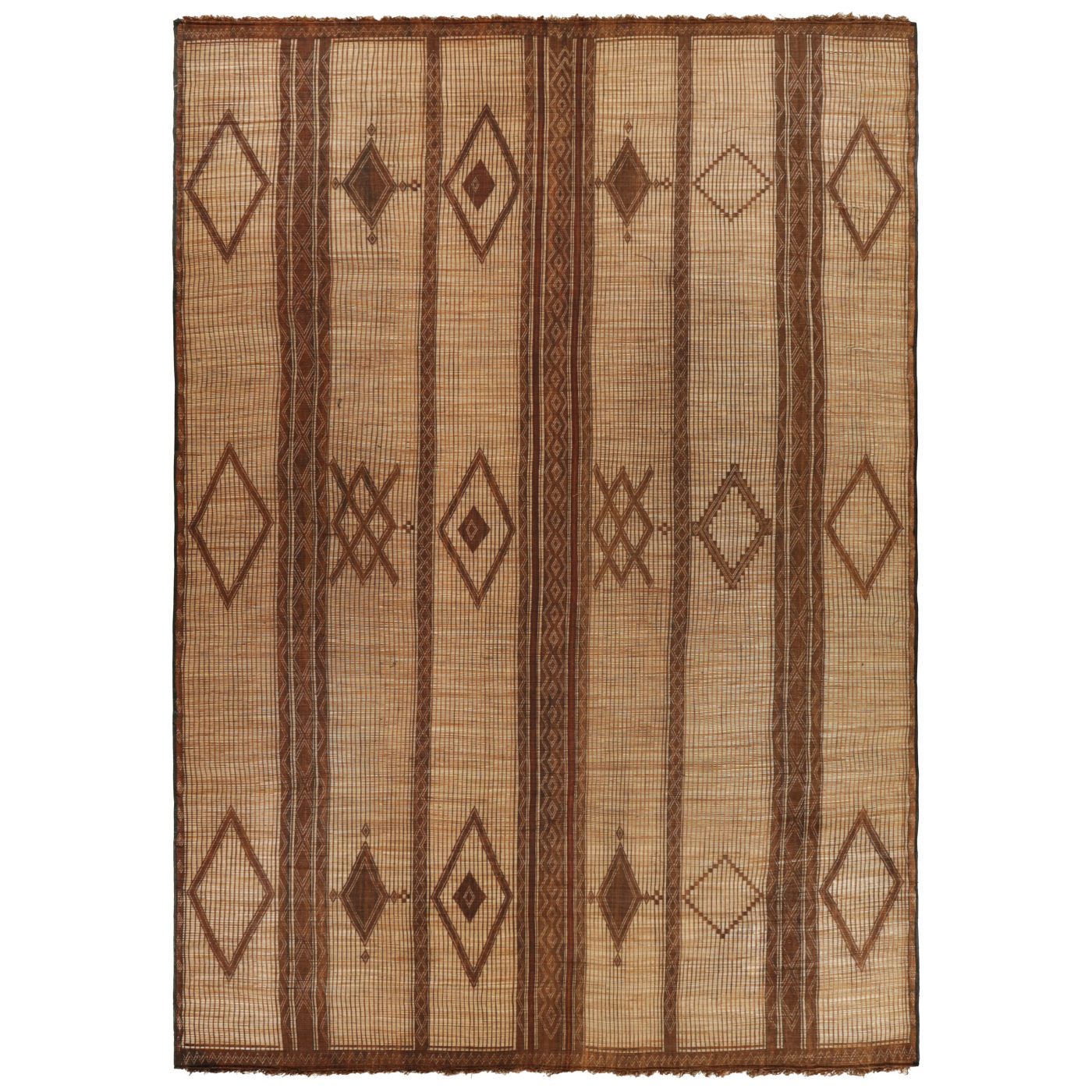
I wasn’t familiar with Tuareg mats before I saw them on your 1stDibs storefront. What are they?
Those are a new venture for us. They’re handwoven mats made by tribespeople in and around Mauritania using reeds and camel leather and are very different from anything else we encounter. Highly discerning designers love them: They are very sophisticated and call for special settings. We have pieces as big as eighteen, nineteen feet long and only select from the oldest [first half of the twentieth century] and most well-conditioned.


Who’s a rug designer you think deserves to be better known?
Zeki Müren was a very interesting character in Turkey in the nineteen sixties and seventies. A lot of people know him for his music — he’s been called the Turkish David Bowie — but he designed carpets, as well, and we hold a very large collection of his work and other carpets influenced by it. They’re more European, and they’re very special pieces. These get my juices going.
What advice can you give to someone shopping for a carpet?
It’s worth learning about carpets. They’re something you need a few times — if not many times — in your life, so it’s worth putting a little energy into educating yourself. And buy from a reputable dealer. That’s true for buying art, buying jewelry and buying rugs.
How do you know if you’re getting a good rug at a fair price?
There are so many elements that determine the quality of a piece: rarity, colors, size, condition, origin, quality of the yarn used. The best value is when you place the most suitable piece in your room. And you have to love it. A good rug is one that the more you live with it, the more you like it — like any other piece of art.

At what point in the decorating process should you choose a rug?
It’s probably easier to start with the rug. It sets the mood and gives you a lot of direction. It’s very hard to put everything else together and then do the rug.
Should the rug go in front of the furniture or underneath it?
Always underneath. The bigger the rug, the bigger the room looks. And when the rug goes underneath the furniture, the room looks much more comfortable.

After you bring home a rug, how should you care for it?
The best thing you can do is rotate it. Even wear is very important, as is making sure that it’s getting even sun. Get it professionally washed every few years. Any stain can come out if the right person takes care of it, but they will have a much easier time if you haven’t tried to clean it yourself beforehand. And I like having a rug pad: It gives the rug a lift, holds it steady and helps keep it from bunching up.
What color trends are you seeing now?
It comes and goes. Now, they’re talking about greens, and there’s a shade of rose that’s popular.
Is there any item you regret having sold?
No, never. Nothing makes me happier than a piece that finds a good home.

